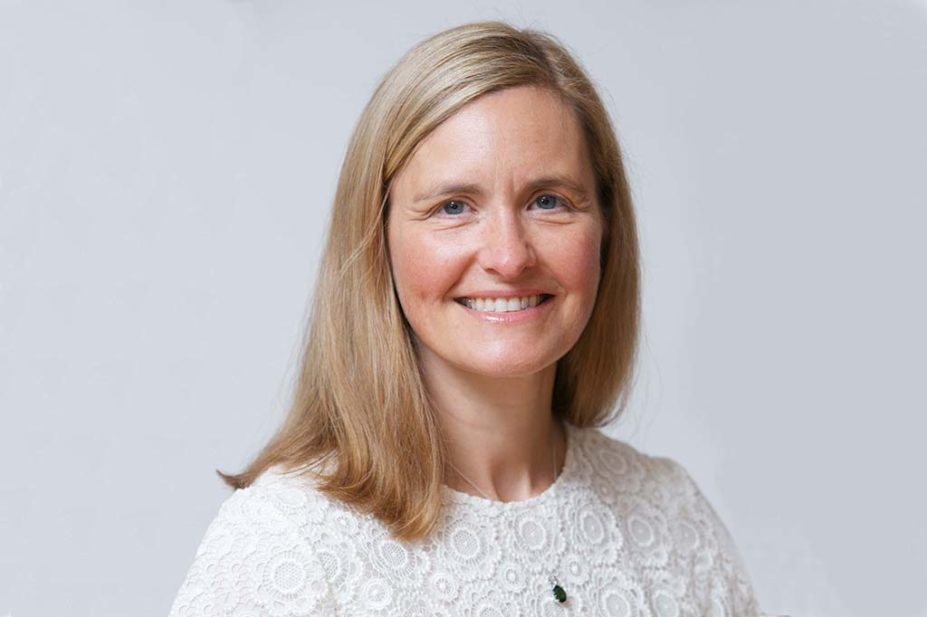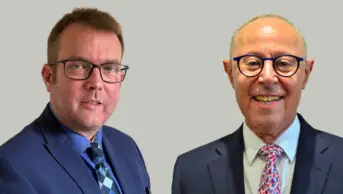
19/10/17 © Sam Friedrich
In July 2022, Henrietta Hughes was appointed the first ever patient safety commissioner for England.
The role was recommended in the Independent Medicines and Medical Devices Safety (IMMDS) review’s ‘First do no harm’ report, published in 2020, which explored issues relating to the use of Primodos, sodium valproate and pelvic mesh.
The report was commissioned primarily because patients — specifically women — did not feel that they were being listened to or that their concerns around medicines and medical devices were being acknowledged.
Hughes is no stranger to standing up for patients. A practising GP, she was previously national guardian for the NHS, a role created to support whistleblowers and improve reporting culture across the NHS. In this role, she worked collaboratively with the Royal Pharmaceutical Society to pioneer ‘Freedom to speak up’ guidance for community pharmacy.
Just four weeks into the role, after starting in September 2022 — and without a fully formed team or even an office yet — The Pharmaceutical Journal spoke with Hughes to find out more about her vision for patient safety in the NHS and where pharmacists fit into that.
What is the role of the patient safety commissioner?
The role is to promote the safety of patients and the importance of promoting the views of patients and the public in relation to medicines and medical devices.
You’ve said that recent reviews on avoidable harms within the health service could be ‘merely the tip of the iceberg’. How will you gauge the true scale of the problem?
Research shows that there are hundreds of millions of prescription errors. I really welcome the Patient Safety Strategy at NHS England, published in July 2019, and how Yellow Card reporting is integral to the way that reports are made. But I still think that there is underreporting.
Some research done back in 2018 showed that not all community pharmacists routinely did Yellow Card reporting. I understand that people don’t have the time but I would really like to see this as an everyday activity, so that the right information goes back to the regulators, and then that can be shared with the public.
When you create the channels for people to raise matters, they do
My experience with ‘Freedom to speak up’ is that, when you create the channels for people to raise matters, they do. More than 50,000 cases were raised while I was in post and a further 20,000 since I’ve left. This is information that people didn’t have a route to share before and they now have a pathway.
In the few weeks that I’ve been in post, I’ve had dozens of people getting in touch with me on a wide range of topics, not just those that were included in the ‘First do no harm’ report, but other safety concerns around medicines and medical devices as well.
How will you manage concerns from patients in a sensitive and timely way?
That information is a gift to share with the people who are able to make changes. It is important that, when there’s a system problem, where people feel really stuck, we’re able to break that down into its constituent parts and see what the barriers are.
People feel that they’re not being listened to and that it’s only when they’ve escalated the problem that people see what they’ve got to say
I continually advocate for the patient voice to be part of that conversation; people feel that they’re not being listened to and that it’s only when they’ve escalated the problem that people see what they’ve got to say. Then all of a sudden it turns into a huge scandal.
What I’d like to do is get to a point where people feel that, if they raise something, it will be seen as a valuable piece of information that is listened to and acted on.
Part of your remit is to develop a set of principles for better patient safety, what will these comprise?
Listening to patients, I see three themes emerging. One of those is around information and data; the information that patients receive to be able to make an informed choice about their treatment, but also the information that healthcare professionals receive to share or signpost to patients.
And then, data, in terms of outcomes and registries, so that we can make sure that when patients have side effects or an experience following treatment, that that’s captured in a way that is accessible not only to the professionals looking after them, but also to patients and the public.
The next theme is around the psychological safety for people to be able to ask questions without fear of being belittled or treated in a degrading way. That when they do raise matters, they are listened to, [the information is] acted on and [they] get feedback about the outcomes.
The third is around a swift, joined up and compassionate system response. Time and again we see that the system becomes defensive. We’ve got a big complex system problem; we’ve got regulators, we’ve got providers, we’ve got individual professionals with their professional responsibilities. And everybody says: “Oh, I can’t do that, somebody else needs to be responsible”.
It’s really about how I can support the system and be a kind of connective tissue to look at things with fresh eyes.
Safety requirements for the use of valproate in people of childbearing age are still not being fully met. Will you be pushing for these to be put into action as soon as possible?
There’s a whole host of areas when it comes to sodium valproate and pharmacists. Patients are still receiving white boxes of sodium valproate, which don’t have safety warnings or patient information leaflets. We also hear about packaging which doesn’t have space for dispensing labelling.
One thing I would be looking to do is to join up the experience of pharmacists, not only in community pharmacies, but also the primary care network-employed pharmacists who I work with in general practice, who do a huge amount to support safety of medicines for patients.
I want to go out and speak with pharmacists to find out what it is that’s stopping people getting the information that they need every single time
In terms of the pregnancy prevention program, one risk is that not everybody goes in person to pick up the medicine. With electronic prescribing and home delivery, we’re risking that one-to-one contact, between a person picking up their medication and their pharmacist. That is a really important relationship, and one which gives people the opportunity to ask questions and for safety concerns to be flagged.
I want to go out and speak with pharmacists to find out what it is that’s stopping people getting the information that they need every single time.
Is turbulence within the UK government affecting work to improve patient safety?
There are reports, such as the ‘One year on’ report from ‘First do no harm’, which are awaiting review and publication. Speaking to patients and patient advocates, they’re really looking forward to seeing the report published and that’s just one of a number of different reports that people are waiting for.
The whole point of the report was about incorporating the patient voice at every single stage, so if people are saying, “we’re waiting for the one-year report, we haven’t heard what’s happening with it, and we weren’t involved in the design and the delivery of the recommendations”, then I’m thinking to myself, “this is an even bigger piece of work”.
It’s the culture shift that we need, so that every time we’re working in any part of the healthcare system, we don’t see safety as a sort of add-on, or a separate part of what we do, but as absolutely core business.
What are your main priorities for the coming year?
My first 100 days is around recruiting a team, developing the governance, getting the infrastructure right — that has to be done to be able to do everything else. I want to consult on the principles and establish an advisory group.
Being visible and being approachable is really important for people to be able to share their concerns with me. I’m an ally; I know that people want to get it right for patients, it’s the barriers in the system that stop us from being able to do that.
I was really pleased to see the NHS England operating framework that got published yesterday (12 October 2022). One of the key priorities is to strengthen the hand of patients and the people that we serve. That is about getting the balance right between the people who are receiving care, whether that’s in a community pharmacy, in a GP practice or another setting, but also about giving the right power to the people who know the right thing to do but find that they’re getting stuck.
What role do pharmacists have in patient safety?
As a GP, I have benefited from the fresh eyes and expertise of a pharmacist so many times in my career. I would like pharmacists to see their role as working collaboratively with all parts of the system so that they do feel safe to raise something if they think that the doctor has got it wrong.
I’ve seen that working effectively with pharmacists working in general practice, and there’s so much knowledge and expertise in acute or mental health settings.
As a GP, I have benefited from the fresh eyes and expertise of a pharmacist so many times in my career
In terms of community pharmacy teams, I can’t really express enough gratitude as to their work throughout the pandemic. Their doors were open when others weren’t. I think all people who are taking medicines or who are looking after their own health and getting over-the-counter treatments, the support they get from community pharmacists is just unmeasurable, and important as part of getting safety right for patients.
What will you consider to be a marker of your success in this role?
Imagine a world where you, as a patient or family member, feel that you can get access to information easily, that the information is easily digestible, and it’s there in a way that works for you.
And, when it comes to being able to make choices about your treatment, that you genuinely feel you are in the driving seat and that you can see that the team around you are trying to support you to get the treatment that’s right for you. But if things aren’t right, that you know that raising those concerns will lead to significant improvements, not only for yourself, but for others as well. And you know that that learning is going to be shared widely across the healthcare system.
I don’t think it’s impossible, but I think it’s going to take time, it’s going to take a lot of energy, and it’s going to take people who are already exhausted from the pandemic to be able to be inspired to get things right for their patients.
You may also be interested in

Ngozi Kalu: ‘When research lacks representation, findings become biased and inequalities emerge’

Henry Gregg: ‘The only way to slow down pharmacy closures is to start closing that £2.6bn funding gap’
